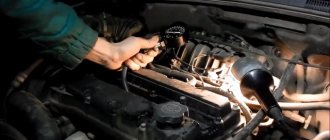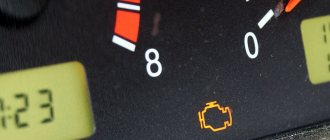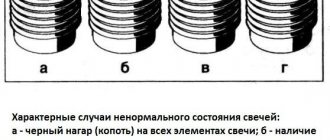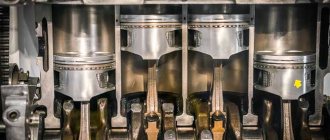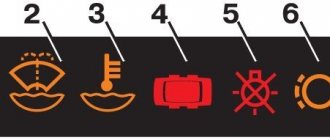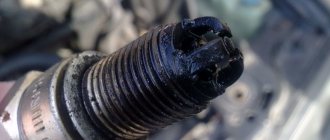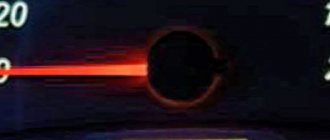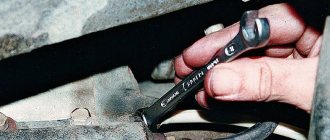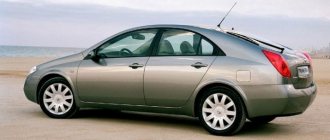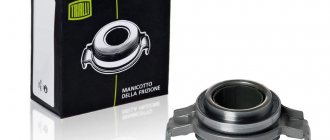Why does the engine stall?
If you notice that the engine is running on gas, diesel or gasoline, it means that the fuel mixture in the cylinders is not burning correctly, as a result the engine begins to vibrate strongly. However, vibration is not always considered a vibration, because an internal combustion engine can vibrate for many reasons.
When the engine stalls, the reasons may be the following:
- the ignition timing was set incorrectly;
- air from outside is sucked into the vacuum brake booster;
- the engine stalls most often because the spark plugs have become unusable;
- there was a breakdown of high-voltage wires;
- the capacitor is broken;
- air is sucked into the intake manifold;
- valves or pistons are burnt out;
- piston rings need replacing;
- the valve timing is disrupted;
- valve rockers worn;
- cylinder head gaskets are burnt out or punctured;
- the valve stem seals have become unusable, they have hardened, pierced or collapsed;
- the engine stalls if the carburetor is adjusted incorrectly;
- the rotary plate bearing or the distributor-distributor shaft is worn out;
- the air filter needs to be replaced;
- depressurization of the system due to the fact that the membrane of the vacuum ignition timing regulator has become deformed or has become unusable;
- Spark plugs are installed that are not suitable for this engine.
That is, the engine stalls after the optimal conditions for combustion of the fuel-air mixture are violated due to mechanical wear or a malfunction of the internal combustion engine. Triple occurs due to the fact that the composition of the fuel mixture does not correspond to the required one, its ignition occurs at the wrong time, and it is impossible to ignite the charge.
Taking this information into account, it will be possible to exclude some systems and diagnose the remaining ones. First of all, you should check the fuel system. When the engine stalls, the injector can also be the cause. The intake air system and then the ignition system should also be diagnosed. In some situations, the engine stalls because the ECM sensor has failed.
Next, we will look in more detail at each of the reasons why the engine stalls. Troubleshooting always manifests itself in the same way, but it will be easier to fix the problem if the car owner understands the causes of this malfunction. The above reasons lead to the fact that one or more engine cylinders fail. The internal combustion engine loses power at high speeds, at low speeds, during acceleration, after warming up, and also when the engine is cold.
For greater clarity, we recommend watching the video by following the following link:
Reason 1. Incorrect ignition timing
When the engine stalls, the reasons are in the injector or spark plugs. However, if you hear a specific clapping sound and the engine seems to jump, then most likely the ignition timing is set incorrectly. To make sure of this, you should pay attention to the sound of the internal combustion engine at low speeds, because at high speeds it will work smoothly, and you will not be able to notice skipping cycles.
Listen to how the motor works. Is the engine running rough at idle? When you start driving and the speed increases, does the friction go away? This means the problem is early ignition.
All you have to do is adjust the system, spending a little time on it.
Reason 2. Leakage of atmospheric air in the vacuum brake booster
Does your car have a vacuum brake booster? Then air leaks may occur due to the fact that the diaphragm, valve or hose has become unusable. The air entering the system mixes with the fuel mixture, which becomes lean. As a result, its ignition in the cylinder occurs poorly. The spark plug gets wet, a spark does not form, and the fuel does not ignite.
In this case, you will notice that the engine throttles both cold and hot, as well as at idle.
To determine that the cause of the tripping is air leakage, you will have to find out where exactly the vacuum booster system has depressurized. This will not be easy to do.
Reason 3: Faulty spark plug
If the engine stalls, spark plugs may be one of the causes of this malfunction. As soon as the engine warms up, the tripping goes away or becomes unnoticeable.
After discovering a cylinder with a non-functioning spark plug, you should unscrew it and examine it. By looking at this part, you can understand the condition of the internal combustion engine. Having received this information, it is necessary to carry out timely repair work in order to keep the power unit in working condition and avoid major repairs.
Look at the color of the central electrode insulator. It will be easy to understand that the spark plug is working. In this case, the insulator will be light or light brown. Has the insulator darkened? It is necessary to find the reason why this happened. Did you find oil or soot on it? This means that the fuel mixture is over-rich, it floods the spark plug or throws lubricant at it. As a result, a spark cannot form normally.
Why is this happening:
- the engine constantly idles while warming up;
- the check valve of the power supply system has become unusable;
- compression in the cylinder is not high enough;
- valve timing is disrupted;
- injectors are not functioning correctly;
- The oxygen sensor is broken.
When the insulator is inspected, pay attention to the spark plug body. There should be no damage, vertical stripes or black dots on it. If they are detected, it is necessary to install a new spark plug, because the old one breaks through.
The last thing to do is to check how well the spark is being produced. You will not just have to short-circuit the side electrode to ground; this procedure will only help you understand whether the spark plug is in working condition. You can determine the quality of sparking like this: place the spark plug at a distance of 1.5–2 cm from the ground, then turn on the starter.
Reason 4. Broken high-voltage wires or capacitor
If there is a breakdown of high-voltage wires, you may notice that the engine is running cold. When the car warms up, the tripping becomes less or disappears altogether. If the engine stalls when hot, then the reason is different.
The easiest way to understand that the cause of tripping is a breakdown of high-voltage wires or a capacitor is to visually inspect them in the dark when the internal combustion engine is started. If there is a breakdown, you will see sparks. The solution is to install new wires and a capacitor. Another way to check is to determine the resistance using a multimeter.
When inspecting the wires, examine their tips. Their color should be uniform, without any grayish-brown inclusions or gray patina.
To eliminate tripling, you can temporarily insulate a damaged wire using electrical tape. However, it should then be replaced.
Reason 5. Air leak in the intake manifold
If air is sucked in, it means that the motor is faulty, as a result of which this symptom appears. This can happen after repair work has been carried out, when the assembly was carried out with errors. A worn gasket can also cause air leaks. Moreover, the engine revs more when you press the gas.
Reason 6. Burnout of valves or pistons
To determine this malfunction, you will have to measure the compression and then disassemble the engine. Because this procedure is not easy to perform, other causes of tripping should be ruled out before inspecting the valves and pistons. If there is a burnout, then the engine constantly shakes - at low speeds, at high speeds, during startup and after warming up.
Reason 7: Broken, worn or deformed piston rings
The engine misfires for this reason quite rarely. To check whether the piston rings are in good condition, you will have to perform compression measurements in the cylinder. Then lubricants are added to it and the compression is measured again. If there is an increase in it, then the problem is in the rings. Due to such a breakdown, the motor begins to overheat. Don't put off repairs.
Reason 8: Incorrectly adjusted valves or severely worn rockers
When the adjustment is incorrect, the valves open and close untimely and incompletely. As a result, the entire volume of the fuel mixture does not enter the cylinder, and the exhaust gases are not completely removed. As a result, the engine stalls.
In addition, more carbon deposits form in the cylinder. The degree of valve opening depends on how worn the rockers are. If the wear is large, opening and closing will be incomplete.
If this is the reason, then the engine will stall during warm-up. When the engine runs a little, due to thermal expansion, the gaps become smaller, and the engine practically does not move when hot.
Reason 9. Faulty distributor
Why is the engine still running? The reason is a worn shaft, bushings and distributor bearings. As a result of wear, a gap forms between the contacts: skipping cycles occurs. Troubling occurs when it is cold, and after warming up it practically disappears. This also happens due to thermal expansion: the gaps become smaller.
Reason 10. Clogged air filter
A clogged filter does not allow air to pass through well, and the fuel mixture becomes over-rich. All you need to do is install a new air filter. If this is the reason, then the engine will stall when cold. Troubling is also observed on a warm engine when pressing the gas, because in this case it needs more air.
Experts do not recommend neglecting the engine if it is running rough. Diagnostics should be carried out as quickly as possible to find the cause of this and carry out the necessary repairs. This is the only way to avoid unpleasant consequences and keep the engine in working condition.
Troubles VAZ engine when cold
When the problem occurs exclusively during warm-up of the internal combustion engine, you need to pay attention to the following components:
- Mass air flow sensor;
- Air leaks in cold parts, after reaching operating temperature, leaks are blocked by expanded material;
- Injectors - cold design may stick;
- Airing of the highway. In some cases, after inactivity, air bubbles form inside the hoses.
After the system warms up, the plugs come out on their own, due to which the engine is leveled.
The negative effect when a VAZ engine fails can be removed independently. The design of the power plant does not have complex parts or systems requiring highly specialized equipment. For proper repairs, it is enough to have a minimum set of tools and have basic knowledge of the internal combustion engine.
Reasons for tripling
Strong engine vibrations are the first symptom of tripping. At the same time, misfires, exhaust problems and other symptoms may occur. Troubleshooting can be permanent or appear occasionally; it can appear during heavy engine loads or during different temperature conditions.
Engine failure during tripping is distinguished primarily by the fact that the combustion process of fuel assemblies in the cylinders is disrupted. Accordingly, this is accompanied by strong vibrations. However, it is fundamentally wrong to consider the appearance of increased vibrations as the only sign of tripling, since there are a number of reasons when the same thing happens.
Trouble engine injector causes
The main problems that contribute to tripling include the following.
- Excessive air in the system.
- Rich FA.
- Problems with the ignition system.
- Wear of engine elements, which is accompanied by a drop in compression.
Thus, the power unit begins to triple as a result of either a mismatch in the composition of the fuel assembly, or untimely ignition of the mixture, or the inability to ignite the fuel. Other types of violations are also possible.
To determine the specific cause of tripling, you need to narrow the search, thereby leaving the only correct reason.
- They usually start with the fuel system. The air supply is then analyzed. In some cases, this is caused by the failure of certain sensors.
- Ignition failure is an equally common cause of power unit tripping. Added to this is a weak spark from the spark plugs. It is recommended to always check the latter as soon as tripping or other ignition-related problems occur. The candles are simply unscrewed and inspected for defects, their color is analyzed, etc. For example, if the insulator of a candle is damaged, then smoke is clearly visible in this place.
- Armor wiring testing. If the engine shakes occasionally in wet weather, this is generally an additional symptom that shows tripping due to wires. The signs go away as soon as the engine warms up and reaches its operating temperature. It is recommended to pay special attention to rubber insulators, which tend to dry out and crack over time.
Attention. Rubber caps for armored wiring often deteriorate after repair work. It can be difficult to visually determine a breakdown until the cap is removed.
Low compression
The most unpleasant thing that an owner can expect is low compression, which can be measured with a special device. Here you cannot do without disassembling or partially disassembling the engine. The reason lies in a burnt-out valve or severe wear of the piston group.
Under no circumstances should the high-voltage wire be removed from the spark plug while the engine is running. This “old-fashioned” method of diagnosis is fraught with electric shock. As a last resort, you can unscrew the spark plug, insert it into the sealing cap and visually evaluate the spark.
Engine trouble is nothing more than a malfunction. Indicates a malfunction that one/several cylinders of the power unit are not functioning. As a result, the combustion process of the fuel assembly is disrupted, which affects the unstable functioning of the motor under load and in transient conditions.
No compression
The most unpleasant reason is a decrease in compression in one of the cylinders.
This problem can only be identified and fixed in a professional workshop:
- valve burnout - the pressure decreases due to a leaky fit of the valve to the seat;
- failure of hydraulic compensators - when they jam, the valves can “hang”, which is why compression decreases;
- wear of the cylinder-piston group is determined by a special tool that measures the gap between the cylinder and piston rings.
You can anticipate the wear of the cylinder-piston group by the rapid oiling of the throttle valve and air filter after cleaning, and the characteristic blue smoke from the exhaust pipe.
Compression can only be restored in a specialized car service center that has the appropriate equipment. To decide whether you need to go to a specialist, it is better to measure the indicator in advance using a compression meter.
Condition of the candles
The color of the spark plug may indicate a particular problem.
- If it has a yellowish-grayish color, this is considered normal, which means that the conditions under which they work are satisfactory
- Dry soot deposits on the spark plugs indicate late ignition and that there is a rich air-fuel mixture. You need to check the condition of the filter and the sensor that is responsible for the coolant temperature
- The presence of oil deposits indicates that oil is entering the combustion chamber through the piston rings or valve guides. In this case, it is necessary to repair the piston group and cylinder head.
- Overheating indicates that the type of spark plugs is not suitable for the car's engine.
- Melted electrodes and the presence of early ignition indicate that a spark is missing, and deposits get on the electrode from behind the combustion chamber. You need to check the knock sensor, the condition of the distribution injectors, the fuel filter, and how the cooling system works. Otherwise, if the problem is not corrected, the engine will fail.
- If there is any mechanical damage, this indicates that there are foreign objects in the combustion chamber, as well as that the spark plug is too long and catches the piston. The problem can be solved by replacing the spark plug, as well as removing the foreign object.
One of the reasons for improper operation may be carbon deposits in the combustion chamber, and if the correct adjustment is made, then at high speeds the carbon will come off the piston, and then it will stick to the spark plug, which will lead to interruptions.
In a Chevrolet Niva car, the idle air control plays a huge role, and the correct operation of the engine will depend on how well it works. It is an electric motor with two poles, which is responsible for moving the valve, limiting the passage of the air received. And if it fails, it needs to be changed completely, since this element is non-separable. In order to remove it you need to do the following:
- Place the car on a flat surface and secure it with the handbrake
- Disconnect the terminals from the battery
- Disconnect the nuts and studs
- Disconnect all connectors from the IAC
- When all the screws that secure it are unscrewed and the wires are disconnected, you can remove the device
If after removing the device there is no mechanical damage, you can try cleaning it with a special cleaner for carburetors. This can help fix the IAC temporarily and will help you get to the right place, and change the device to a new one on the spot.
Ignition
The car is tripping the injector due to the module
The ignition module is a unit that comes into question after all the checks have been carried out. It is the bobbin that can become the culprit for the power unit tripping at idle or in other modes. To check the coil you need to do this:
- Unscrew the spark plug, then apply it to the ground (any part of the body).
If the spark is good, its color is of high quality, and a characteristic crackling sound is heard, then the serviceability of the reel is not questioned. On the contrary, if there is no spark, or it is of poor quality, the module must be replaced, and thus it will be possible to “cure” the tripping.
It's not very often that a switch goes bad, but it does happen. It must be checked and, if anything, replaced.
Troubles the engine on the Niva 21214 injector
The module and the coil are like different things.
And on MP7.0, how do the injectors turn on, that is, in order?
